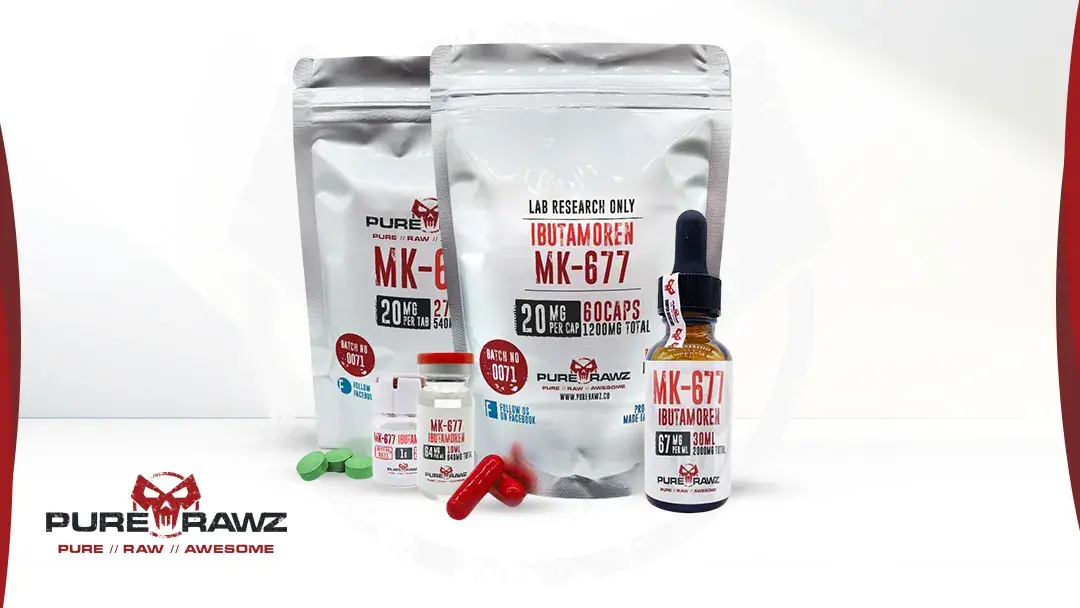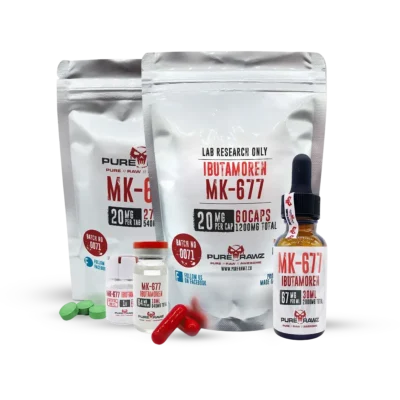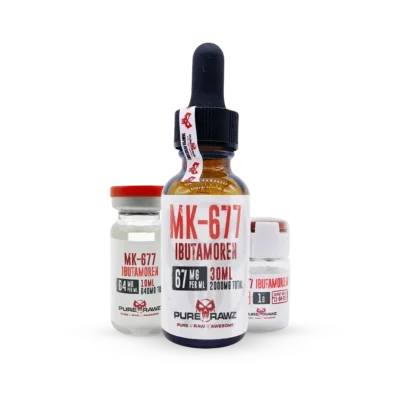🔥 WE HAVE THE BEST COMPOUNDS ON THE PLANET

MK-677, also known as Ibutamoren, is often used in research to help boost growth hormone (GH) and IGF-1 levels in test subjects.
Understanding how long MK-677 remains in the system of a research subject helps researchers examine its behavior in the system, including how it’s absorbed, metabolized, and eventually eliminated.
In this blog, we’ll look at how long MK-677 can be detected in different types of samples and what factors can affect its detectability.
Ibutamoren, also known as MK-677, is a growth hormone secretagogue that functions similarly to ghrelin. According to research, MK-677 engages with the pituitary gland to promote the secretion of HGH. Research suggests that MK-677 may also inhibit the release of somatostatin.

According to available research studies and laboratory trials, MK-677 may be detectable in research subjects for extended periods. The duration of detectability depends on factors such as half-life, metabolism, dosage, and length of exposure.
Several investigations have examined how long MK-677 or its metabolites remain in biological samples:
Ongoing studies continue to evaluate the precise clearance timeline of MK-677 in different experimental models. Current evidence suggests that the duration of detectability is variable and highly dependent on biological and methodological factors.
MK-677 is usually detectable in both urine and blood samples during research studies. Below are common lab methods used to identify its presence in experimental models:
Urine testing is a common way to check for substances like MK-677. In this test, researchers look for MK-677 metabolites in the urine of research subjects.
The compound can stay detectable in urine for several days to even weeks after the last dose. The exact detection period depends on the test’s sensitivity and how fast the model’s body processes and removes the compound.
Blood testing is another method used to detect MK-677 in research models. Although it’s more invasive than urine testing, it can provide more accurate results.
Advanced tools like LC-MS/MS (liquid chromatography-tandem mass spectrometry) are often used for this. MK-677 may be found in blood for several days or even weeks after the last exposure, depending on the dosage, test frequency, and the model’s metabolism.
Several variables may affect how long MK-677 stays detectable in a subject:
Researchers use several analytical techniques to detect MK-677 in test samples:
Each method has different sensitivity levels and may detect MK-677 for varying lengths of time.
While MK-677 itself may be cleared from the system in a few days, its biological effects may last longer. Increased growth hormone and IGF-1 levels may persist beyond the detectable presence of the compound. In some research models, the hormonal response continues for up to a week after the final dose.
Detecting MK-677 is important for several reasons:
In research settings, there’s no medically approved “flush” for MK-677. However, its clearance can be influenced by
Researchers must allow sufficient time for washout before conducting follow-up studies.

MK-677 is not an anabolic steroid, but research shows it may have indirect effects by increasing growth hormone (GH) and IGF-1 levels. These hormones may support muscle growth and recovery in research models.
If you’re looking to buy MK-677 in the USA, PureRawz offers 99% pure MK-677 strictly for research purposes, with fast and reliable shipping.
A Certificate of Analysis is available for reference, providing information on identification, purity, and concentration.
MK-677 is considered legal for research purposes. It is not FDA approved for human or veterinary use. Further studies are required to determine its effectiveness. (R)
MK-677 has an approximate half-life of 24 hours in humans. This relatively long half-life supports once-daily administration in research settings, making it practical for laboratory trial protocols.
MK-677 is usually given orally to research subjects in the form of a powder, liquid, or tablet during lab studies. It is commonly administered once daily to maintain consistent results in experimental settings.
This information is for educational purposes only and not medical advice. Products are for research use only. Research must follow IRB or IACUC guidelines. Verify information independently before purchasing. By ordering, you agree to our Terms and Conditions. If you are not 100% satisfied with the product you received, please contact us at support@purerawz.co
ATTENTION: All our products are for LABORATORY AND RESEARCH PURPOSES ONLY, not for veterinary or human usage.

Team Purerawz provides simple and research-based information on SARMs, Peptides, Nootropics, Kratom and Stacks. Our writers and researchers make sure each article is clear, accurate, and easy to understand. We aim to help labs, students, and science enthusiasts find the right compounds for their research.
We are offering the following products on sale. Hurry up before the sale ends!
The following products are out of stock:
As part of our exclusive upscale promotion, you can add some of our top research compounds to your order at a special discounted rate.